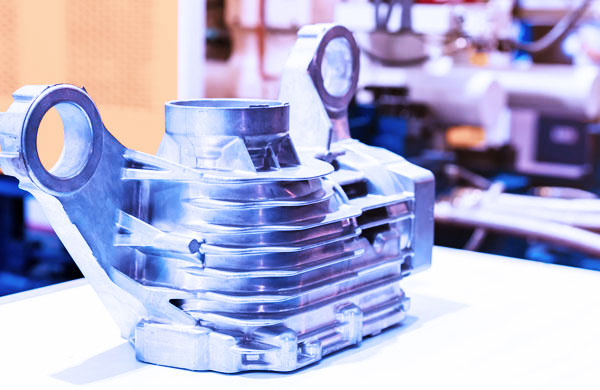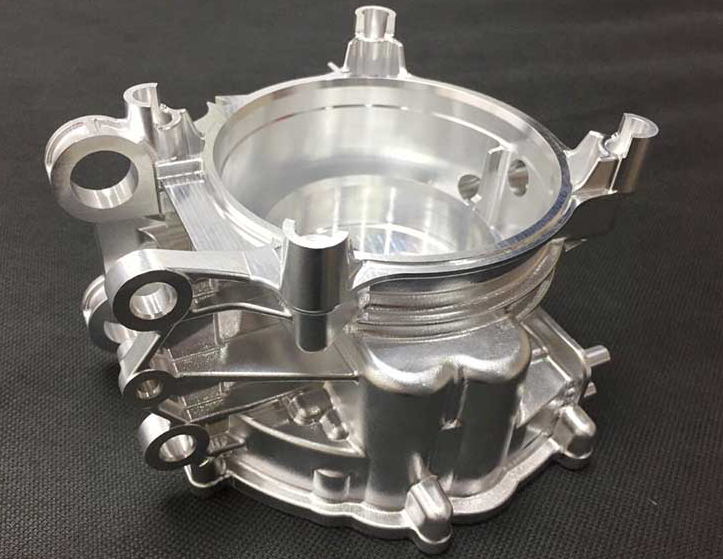The 6-Second Trick For Stahl Specialty Company
The 6-Second Trick For Stahl Specialty Company
Blog Article
What Does Stahl Specialty Company Do?
Table of ContentsA Biased View of Stahl Specialty CompanyHow Stahl Specialty Company can Save You Time, Stress, and Money.6 Easy Facts About Stahl Specialty Company ExplainedThe Single Strategy To Use For Stahl Specialty CompanyUnknown Facts About Stahl Specialty CompanyExcitement About Stahl Specialty Company

If you're designing a steel product, you have actually likely taken into consideration utilizing light weight aluminum as the base product. It has a high strength-to-weight ratio, great corrosion resistance, excellent formability, and aesthetic appeal. These aspects have actually resulted in its enhanced popularity over the last few years. Pure aluminum has restricted applications, so it is commonly incorporated with other aspects, such as silicon, magnesium, and manganese to form alloys.
(AA), based in North America, has actually created requirements that regulate aluminum alloys' composition, residential properties, and classification. There are two types of aluminum alloys functioned and cast.
The Single Strategy To Use For Stahl Specialty Company
Cast light weight aluminum alloys are made by thawing pure light weight aluminum and integrating it with various other metals while in liquid kind. Then the mix is poured into a sand, pass away, or investment mold. After solidification, the steel is removed from its mold and mildew. At this stage, it is in either its last type or as a billet or ingot for additional processing.

As an example, 160.0 represents a cast with a minimum of 99.60% aluminum. The fourth digit, which comes after the decimal factor, specifies if the alloy is a spreading (xxx. 0) or an ingot (xxx. 1). Wrought light weight aluminum alloys also begin by combining molten light weight aluminum with other metals. In comparison to cast alloys, nonetheless, they are developed into their final shape via processes such as extrusion, rolling, and bending after the metal has actually solidified right into billets or ingots.
There are many minor distinctions between functioned and cast light weight aluminum alloys, such as that cast alloys can consist of a lot more considerable amounts of other steels than wrought alloys. But the most notable distinction in between these alloys is the manufacture process where they will most likely to provide the end product. Apart from some surface area therapies, cast alloys will certainly exit their mold in nearly the specific strong form preferred, whereas wrought alloys will undertake several adjustments while in their solid state.
If you assume that a functioned alloy may be the finest for your job, have a look at a few of our articles that describe even more concerning certain functioned alloys, such as Alloy 6061 and Alloy 6063. On the various other hand, if you assume a cast alloy would certainly be better for you, you can find out more concerning some cast alloys in our Alloy 380 and Alloy 383 articles (coming soon).
Stahl Specialty Company Things To Know Before You Get This
When selecting an aluminum foundry for your production demands, it's vital to examine a number of elements. Among the most important facets to take into consideration is the experience and proficiency of the shop. Foundry. Choosing a foundry who has the appropriate understanding of the light weight aluminum casting procedure, and the portfolio to show for it, aids to have an effective outcome for your project
Having the experience and sector expertise to engineer your castings for optimum manufacturing and high quality outcomes will simplify the task. Making light weight aluminum spreading requires a complicated collection of processes to attain the best results. When choosing a brand-new aluminum factory to companion with, ensure they have comprehensive sector experience and are educated concerning all aspects of the light weight aluminum spreading process: layout, manufacturing, material analysis, and product testing.
The factory must additionally have a proven performance history of delivering exceptional products that satisfy or exceed customer assumptions. Quality control must also be at the top of your list when choosing a light weight aluminum foundry. By dealing with a qualified foundry who follows the criteria for quality assurance, you can safeguard the integrity of your product and ensure it meets your specs.
By choosing a firm who offers services that meet or exceed your product requirements, you can be certain that your project will be finished with the utmost accuracy and performance. Specific aluminum factories concentrate on specific kinds of manufacturing procedures or casting methods. Various components call for different production techniques to cast aluminum, such as sand casting or die casting.
Stahl Specialty Company Things To Know Before You Buy
Die spreading is the name given to the procedure of producing complex metal elements via usage of mold and mildews of the part, likewise known as passes away. It produces even more parts than any kind of other process, with a high level of accuracy and repeatability. There are three sub-processes that drop under the group of die spreading: gravity die casting (or additional reading permanent mold and mildew spreading), low-pressure die casting and high-pressure die spreading.
After the pureness of the alloy is evaluated, dies are created. To prepare the dies for casting, it is important that the passes away are tidy, so that no residue from previous productions remain.
Stahl Specialty Company Things To Know Before You Buy
The pure metal, also known as ingot, is included to the heater and kept at the molten temperature level of the steel, which is after that transferred to the shot chamber and infused right into the die. The stress is then maintained as the steel solidifies. As soon as the steel solidifies, the cooling procedure begins.
(https://www.storeboard.com/stahlspecialtycompany1)
The thicker the wall surface of the component, the longer the cooling time due to the quantity of indoor metal that additionally requires to cool down. After the element is totally cooled, the die halves open and an ejection system presses the element out. Adhering to the ejection, the die is shut for the next injection cycle.
The flash is the extra product that is cast throughout the procedure. This should be cut off using a trim tool to leave simply the primary part. Deburring removes the smaller sized items, called burrs, after the trimming process. The part is brightened, or burnished, to provide it a smooth coating.
The 4-Minute Rule for Stahl Specialty Company

Zinc is among one of the most previously owned alloys for die casting as a result of its reduced price of resources. It's additionally one of the more powerful and secure metals. And also, it has excellent electrical and thermal conductivity. Its rust resistance also enables the components to be durable, and it is one of the much more castable alloys due to its reduced melting point - aluminum metal casting.
As pointed out, this alloy is just one of one of the most commonly utilized, yet manufactures will, sometimes, pick aluminum over zinc as a result of light weight aluminum's production benefits. Aluminum is highly economical and one of the much more versatile alloys. Aluminum is made use of for a number of different products and industries anything from window frameworks to aerospace materials.
Report this page